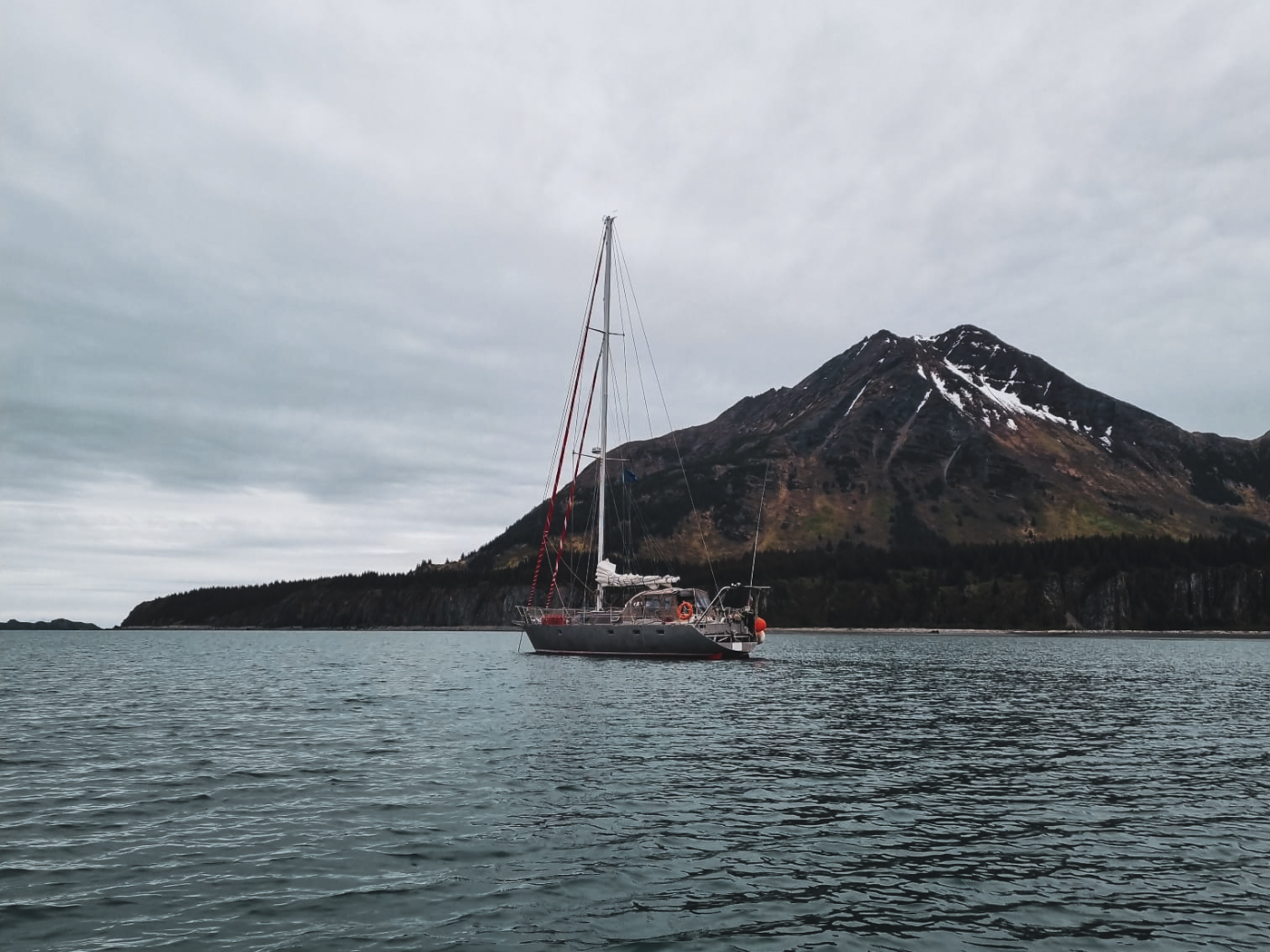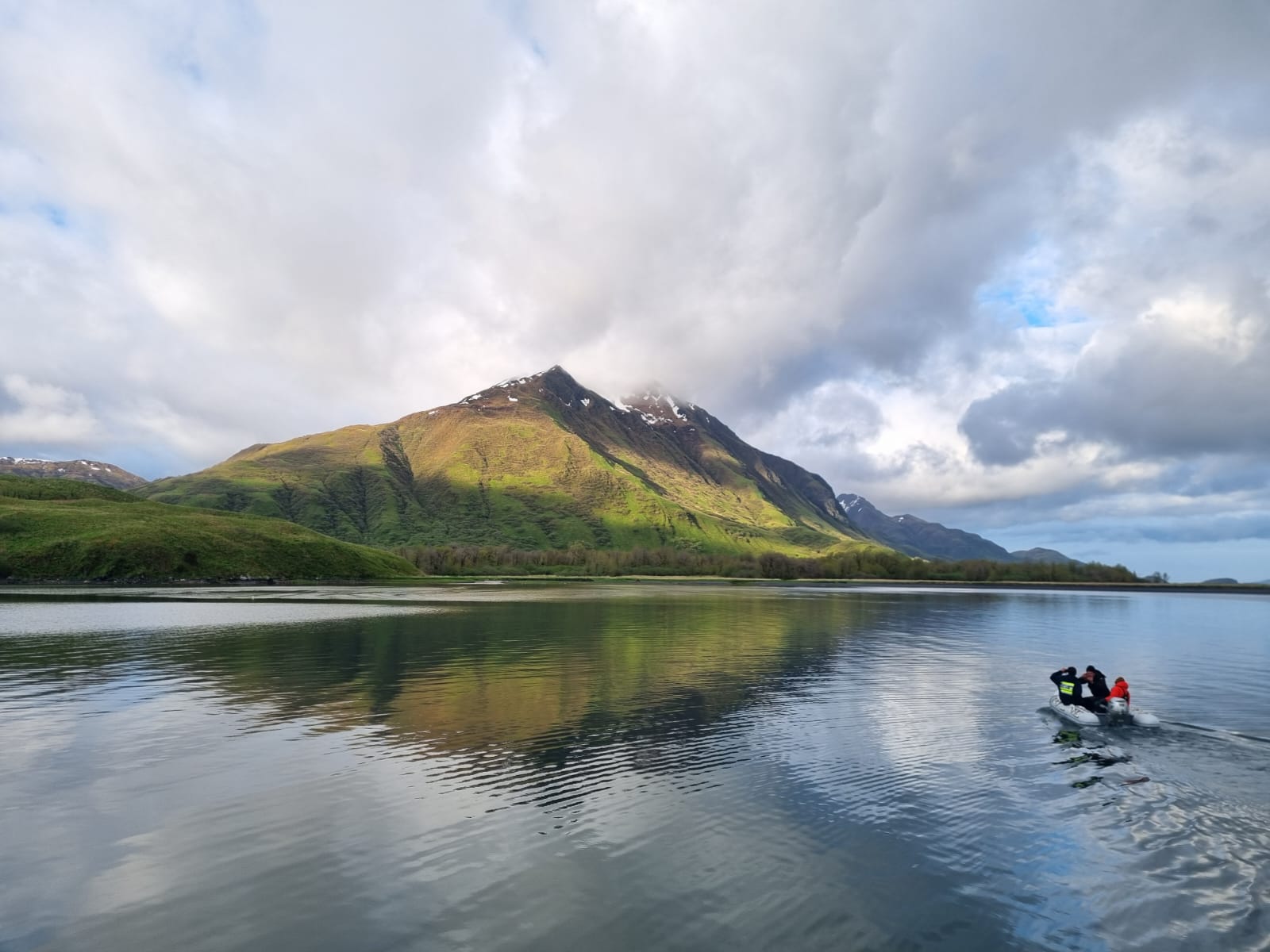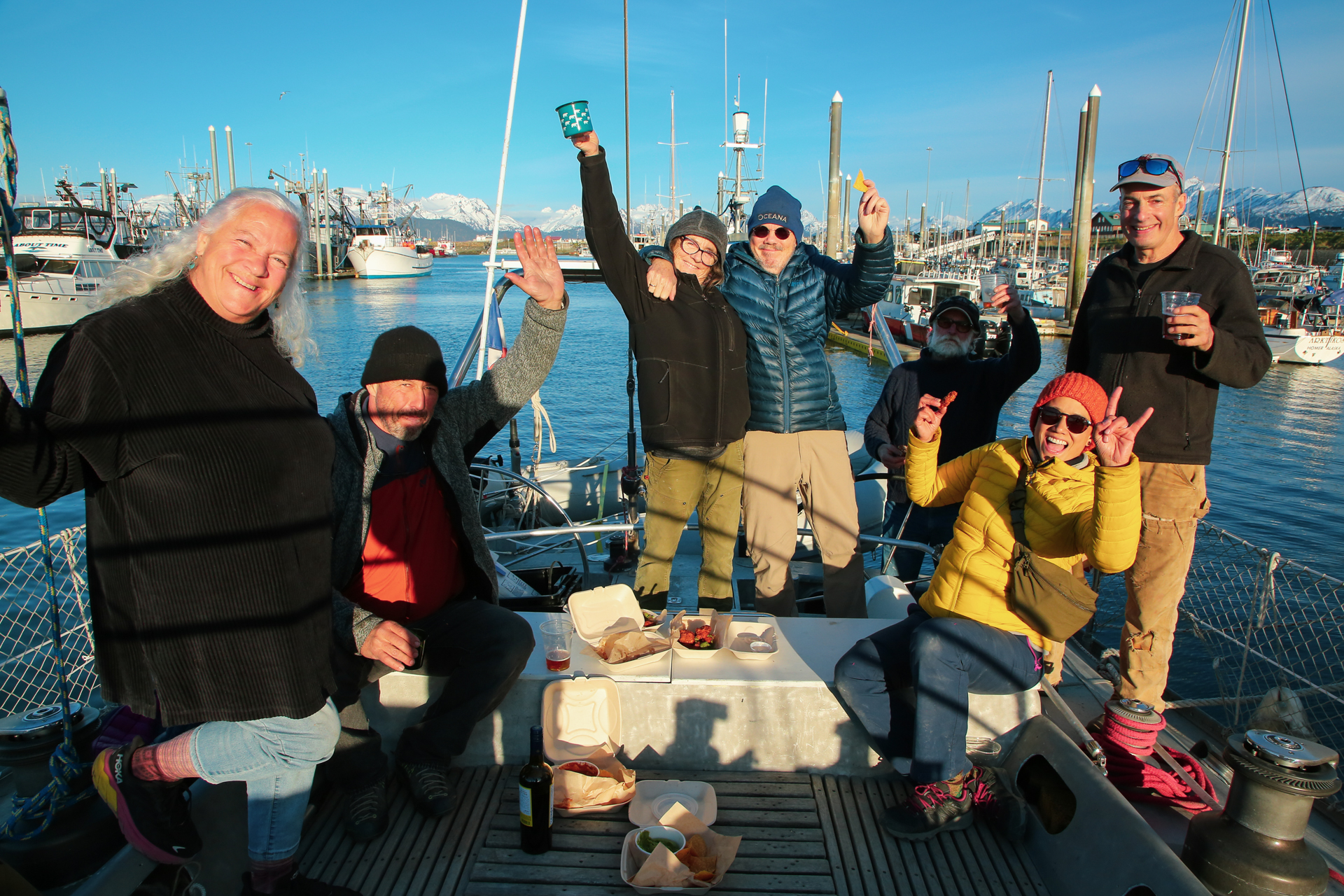With Caroline Bouchard, Researcher and specialist in pelagic marine ecosystems and polar cod
at the Greenland Climate Research Centre of the Greenland Institute of Natural Resources
The polar cod, a key species in the Arctic ecosystem
With an average length of 20 to 40 cm, the polar cod is a fish at the center of the Arctic food chain (the set of relationships that are established between organisms according to the way they feed). It feeds on zooplankton, and is eaten in turn by all sorts of animals: narwhals, belugas and seabirds.
Researcher Caroline Bouchard calls it “the sardine of the north”, because it is a species that can feed many species of predators in these ecosystems whose energy production is based on lipid transfer. Polar cod is a pelagic species, which means that it can live near the bottom but also in the entire water column.
During the winter, polar cod are aggregated near the bottom, their spawning period is from January to March. The eggs will rise to the surface and will be under the surface of the ice for an incubation period depending on the temperature of about 2 months. After the eggs hatch, around springtime concomitant with the hatching of plankton life, the larvae race for lipids during the summer to feed. When the larvae are large enough, about 35 mm, they begin to descend to the bottom around September-October to join the rest of the population. Polar cod live about 5 years and start spawning after 3 years.
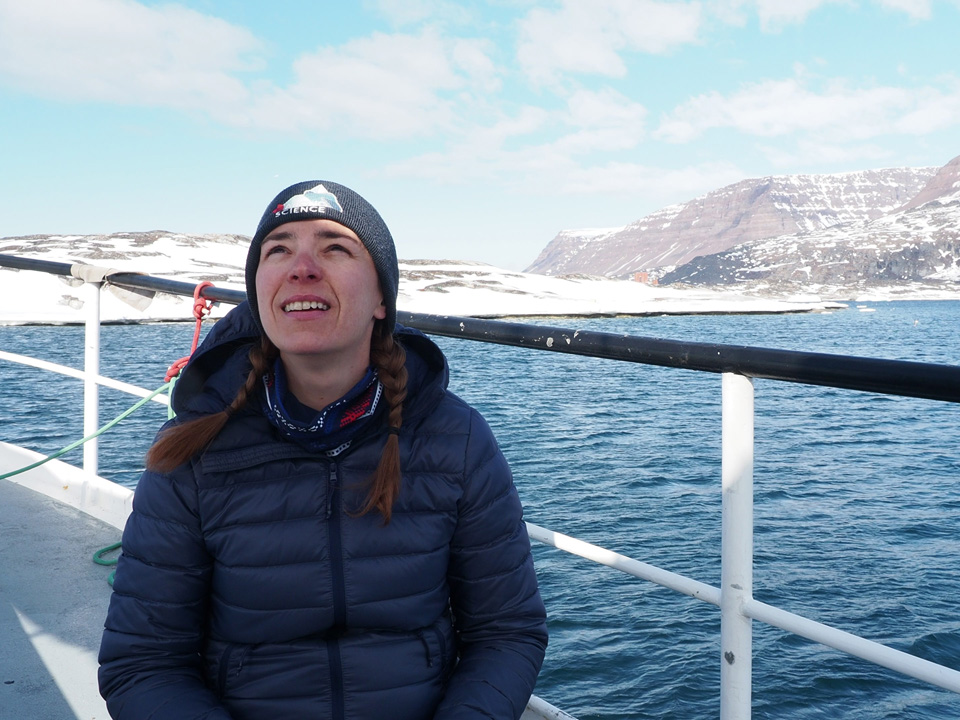
Researcher Caroline Bouchard
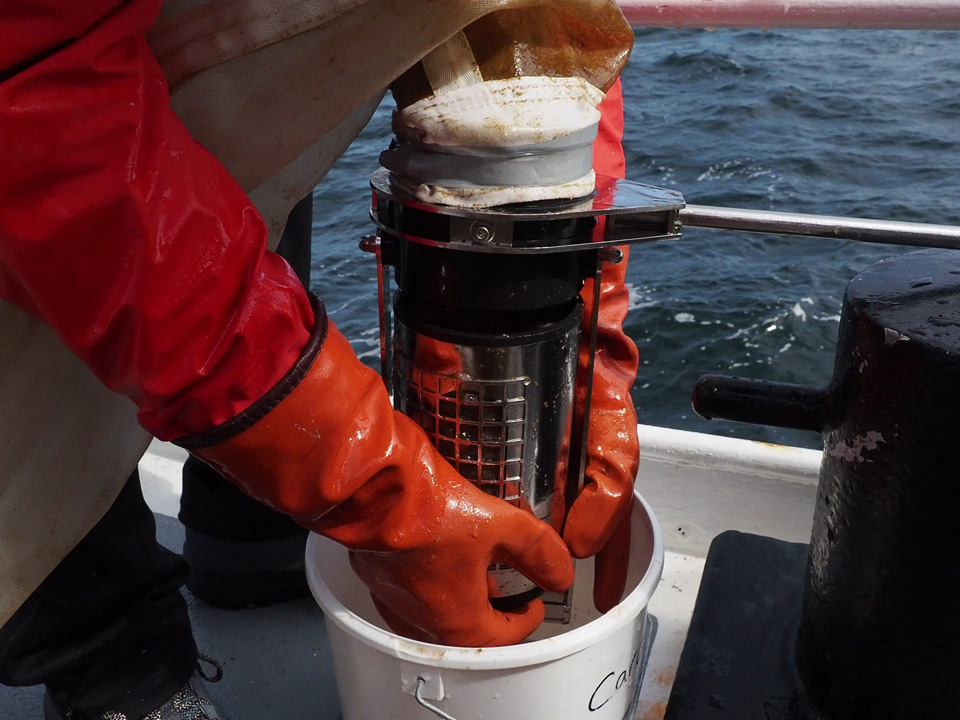
Plankton receptacle
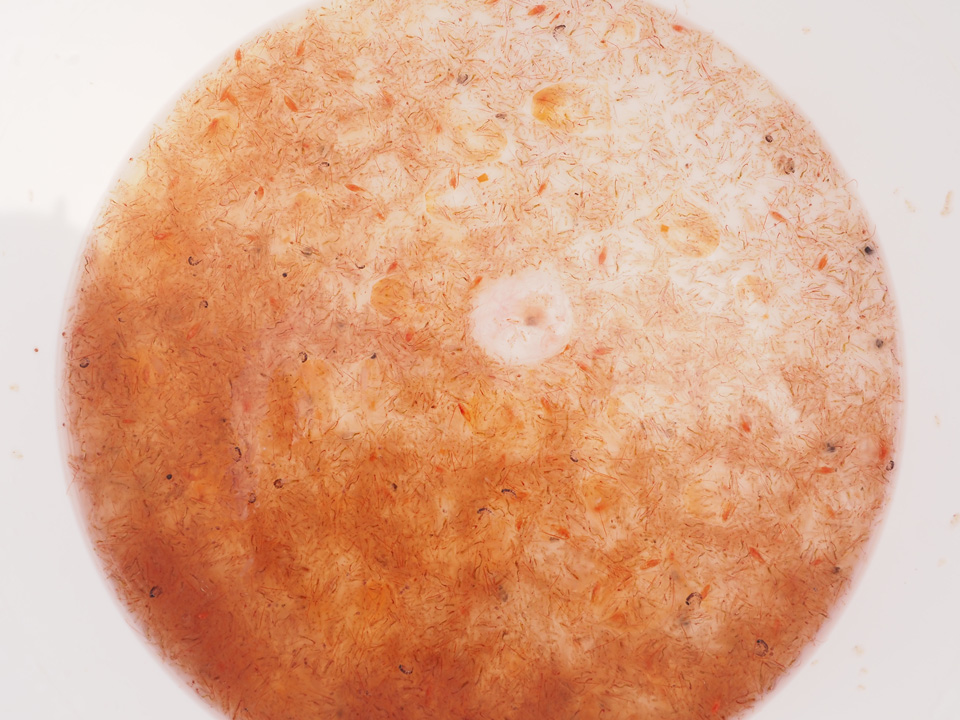
View of a sample taken
A sampling campaign carried out on board the Mauritius
Conducted with Caroline Bouchard, the sampling carried out on the Mauritius consisted of deploying a plankton net (bongo net) to collect zooplankton and fish larvae. The net is lowered to a depth of about 40 m for about 30 minutes. The net is also equipped with a CTD probe to measure salinity, temperature and depth as the filter is lowered and raised in the water column. Once the net is raised, a plankton soup is recovered and conditioned on the boat before transfer to the laboratory in Nuuk.
In the laboratory, the samples are sorted and the larvae separated from the plankton. Each larva is identified and measured and additional analyses such as otolith extractions (calcareous concretions present in the inner ear of larvae and fish that allow an indication of the age of the specimen) and stomach content analyses are carried out. A taxonomic analysis can be conducted on plankton to identify species and their abundance.
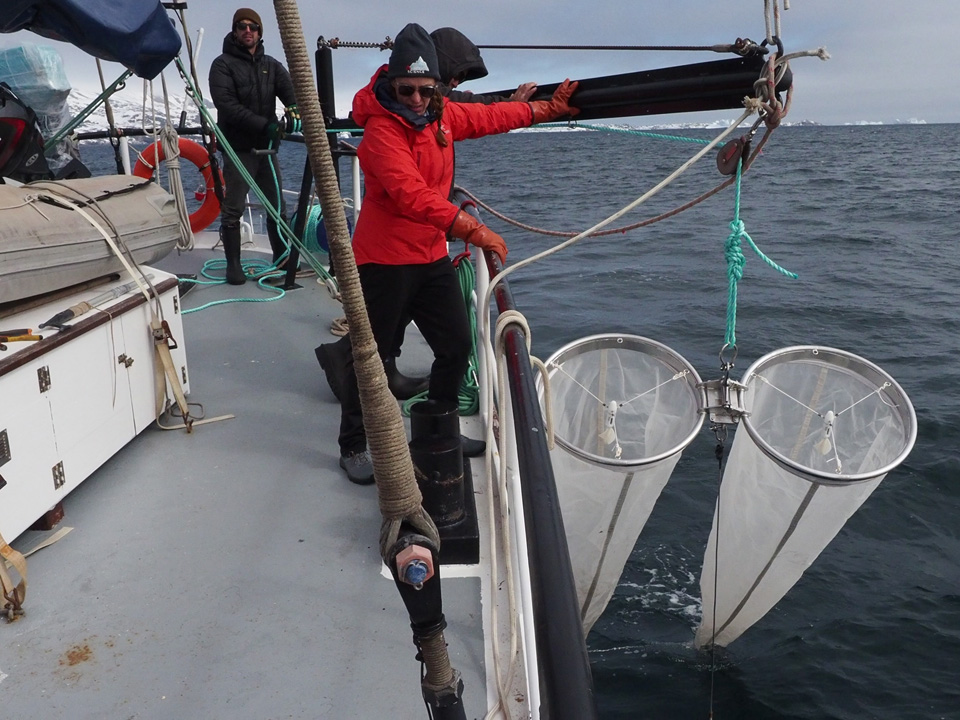
Launching of the bongo net…
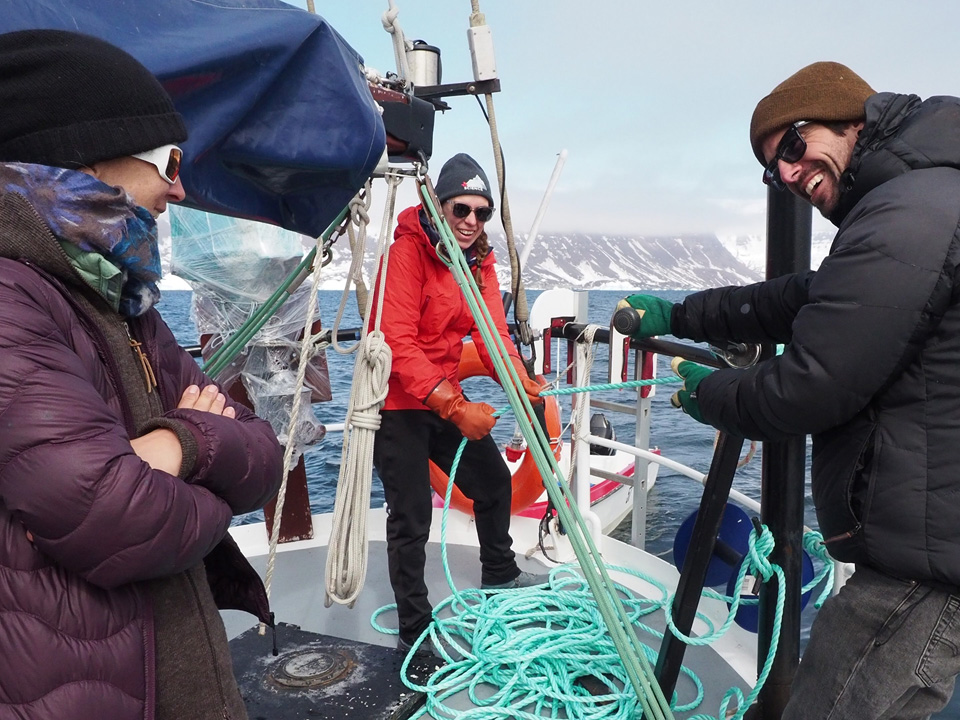
…and the (sporting) rise of the bongo net
Sensitivity to climate change
Polar cod and their eggs and larvae are very sensitive to changes in temperature, especially changes at the surface. Because the life cycle of cod is relatively short, the population size can change very quickly.
In 2019, surface water reached 8-10°c in some areas of West Greenland and very few larvae and eggs could be sampled, indicating high mortality of the species.
A change in the abundance and distribution of Arctic cod with climate change may have large implications for Arctic ecosystems as a whole.
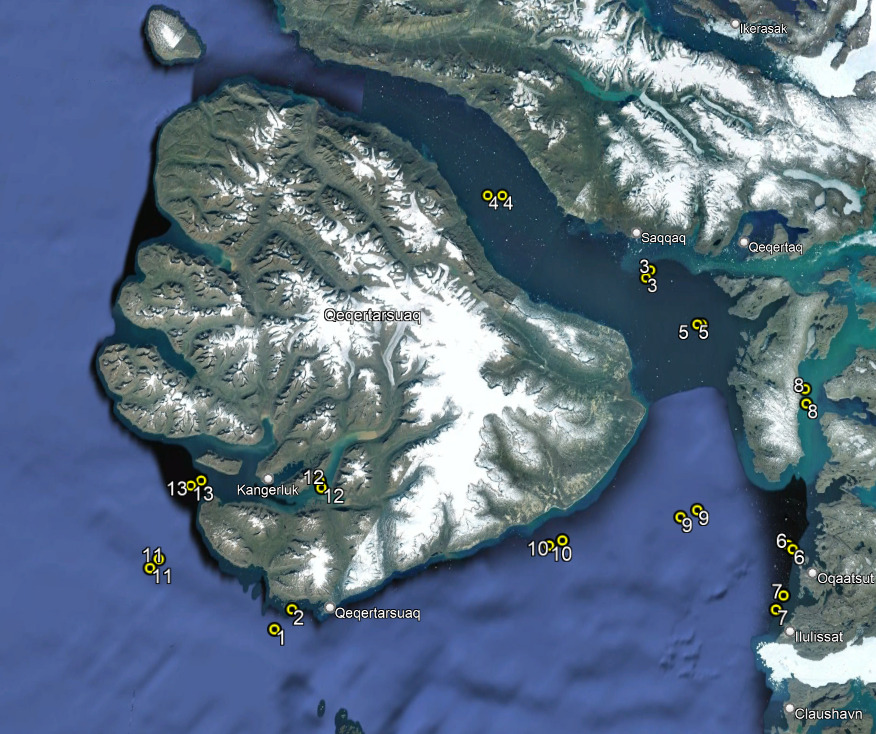
Map of samples taken in June on board the Mauritius
Photos : Marion Cherrak, scientific coordinator on board – Pacifique


